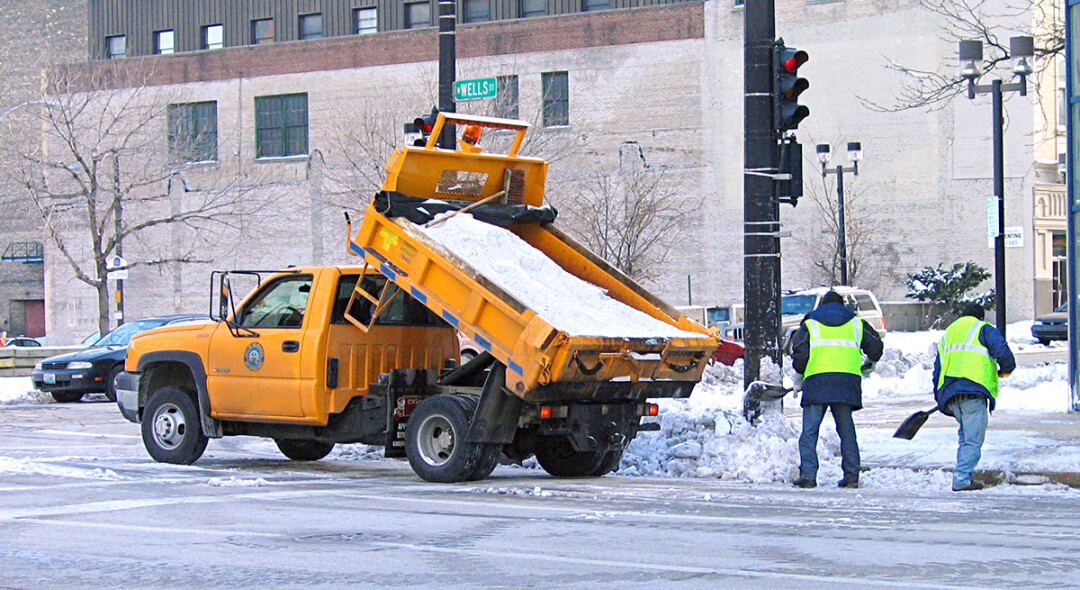How Does Salt Melt All That Ice?

Brrr, it’s cold outside! Those trucks are out salting the roads again, making them safe to drive on. But how does salt melt ice?
Salty water freezes at a lower temperature than pure water. Water on a road will freeze at 32 degrees Fahrenheit, but salt lowers water’s freezing temperature to 20 or even 15 degrees. This is all because of what happens on the molecular level. As it gets colder, the molecules in water line up to form crystals on the road: ice. But ice is not completely still and solid. All molecules, even in ice, vibrate. This vibration bumps some crystals out of the icy line-up. They become water. Water molecules then take their place in the crystal and become ice.
Salt added to the road after it snows is called de-icing. The salt dissolves in the thin layer of water on the surface. Salt molecules get in the way of those water molecules taking their turn in the ice crystal. Ice molecules are still breaking away from the crystal, but fewer water molecules can join up with the ice. Salt works kind of like a rambunctious toddler causing a ruckus at the grocery store. The adults want to form nice neat lines at the checkout, but the toddler runs around and keeps them from lining up.
As more water leaves the crystal, it spreads dissolved salt around the road, melting more ice. Many communities are now spraying the road with salty water before it snows. This anti-icing keeps ice from forming in the first place. Because the salt is already dissolved in water, it works at lower temperatures than rock salt. Anti-icing also means communities need to use less salt, which is good for the environment and saves money.


















